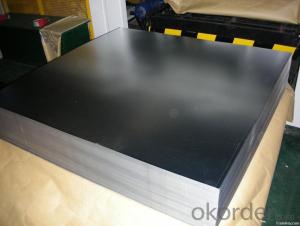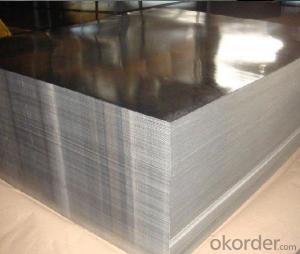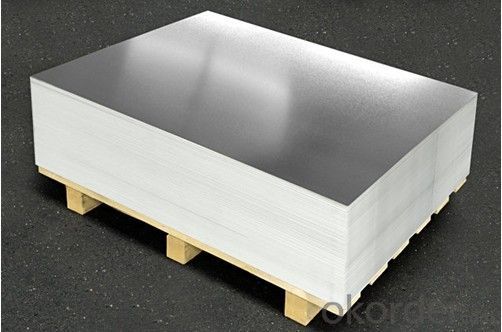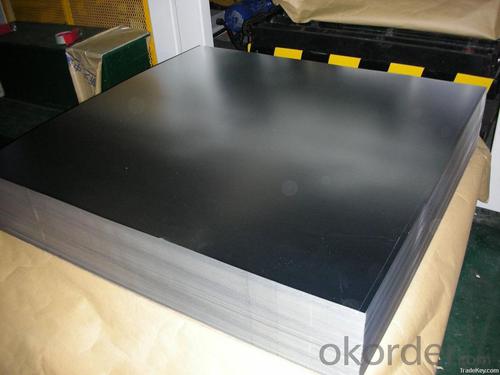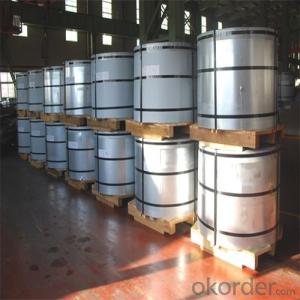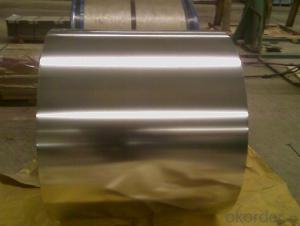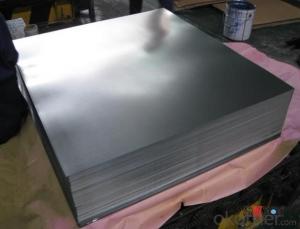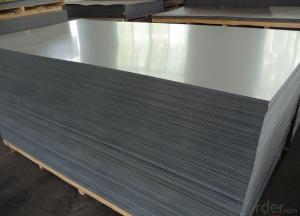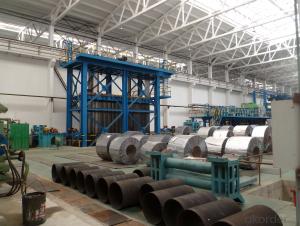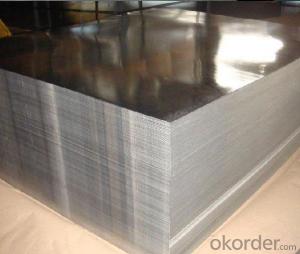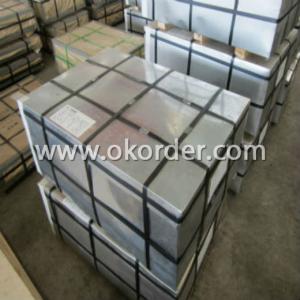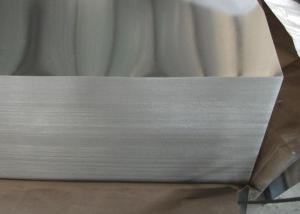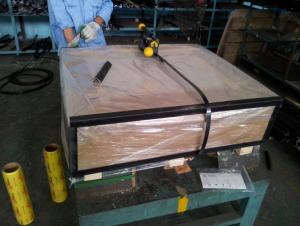Electrolytic Tinplate in Sheets for Foods Packaging
- Loading Port:
- Tianjin
- Payment Terms:
- TT OR LC
- Min Order Qty:
- 25 m.t
- Supply Capability:
- 7000 m.t/month
OKorder Service Pledge
OKorder Financial Service
You Might Also Like
1.Structure of Electrolytic Tinplate in Sheets for Foods Packaging Description
Electrolytic Tin Plate Coils and Sheets for Foods Metal Packaging, is one thin steel sheet with a coating of tin applied by electrolytic deposition. Tinplate made by this process is essentially a sandwich in which the central core is strip steel. This core is cleaned in a pickling solution and then fed through tanks containing electrolyte, where tin is deposited on both sides. As the strip passes between high-frequency electric induction coils, it is heated so that the tin coating melts and flows to form a lustrous coat.
2.Main Features of the Electrolytic Tinplate in Sheets for Foods Packaging
Appearance – Electrolytic Tin Plate is characterized by its beautiful metallic luster. Products with various kinds of surface roughness are produced by selecting the surface finish of the substrate steel sheet.
Paintability and printability – Electrolytic Tin Plates have excellent paintability and printability. Printing is beautifully finished using various lacquers and inks.
Formability and strength – Electrolytic Tin Plates have got very good formability and strength. By selecting a proper temper grade, appropriate formability is obtained for different applications as well as the required strength after forming.
Corrosion resistance – Tinplate has got good corrosion resistance. By selecting a proper coating weight, appropriate corrosion resistance is obtained against container contents. Coated items should meet 24 hour 5 % salt spray requirement.
Solderability and weldability – Electrolytic Tin Plates can be joined both by soldering or welding. These properties of tinplate are used for making various types of cans.
Hygienic – Tin coating provides good and non toxic barrier properties to protect food products from impurities, bacteria, moisture, light and odours.
Safe – Tinplate being low weight and high strength makes food cans easy to ship and transport.
Eco friendly – Tinplate offers 100 % recyclability.
Tin is not good for low temperature applications since it changes structure and loses adhesion when exposed to temperatures below – 40 deg C.
3.Electrolytic Tinplate in Sheets for Foods Packaging Images
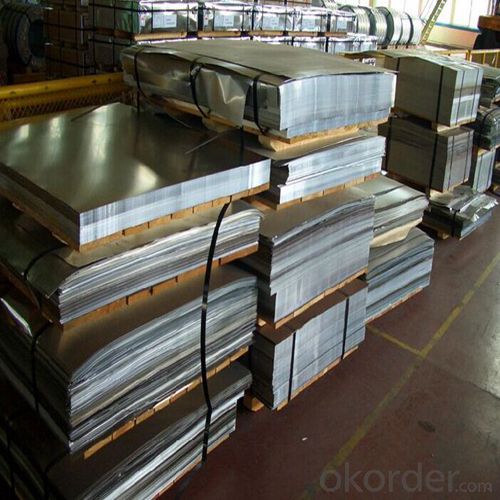
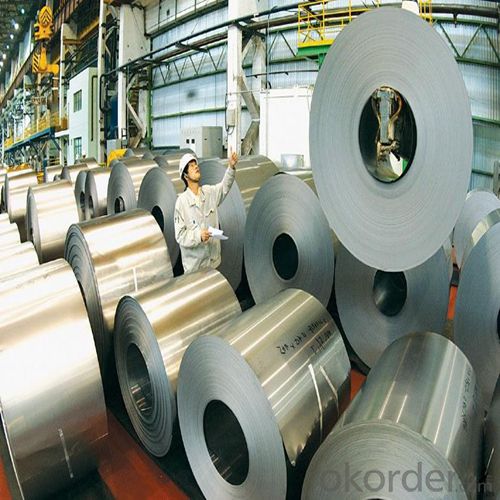
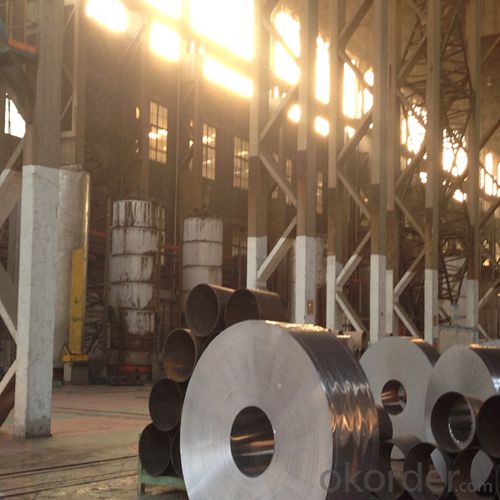
4.Electrolytic Tinplate in Sheets for Foods Packaging Specification
Standard | ISO 11949 -1995, GB/T2520-2000,JIS G3303,ASTM A623, BS EN 10202
|
Material | MR,SPCC |
Thickness | 0.15mm - 0.50mm |
Width | 600mm -1150mm |
Temper | T1-T5 |
Annealing | BA & CA |
Coil Inner Diameter | 508mm |
Weight | 6-10 tons/coil 1~1.7 tons/sheets bundle |
Passivation | 311 |
Oil | DOS |
Surface | Finish,bright,stone,matte,silver |
5.FAQ of Electrolytic Tinplate in Sheets for Foods Packaging
- How are the Electrolytic Tin Plates specified?
The Electrolytic Tin Plates are specified as per the steel base, extent of tempering, the coating weight, annealing method and the surface finish.
- How many types there are for base steels?
The base steels are of three types: Type MR, L, D
-What your tinplate material is used for ?
Tinplate is widely used for the packaging of products. Such as food cans,
beverage cans, pet cans, closures, general line cans and so on.
Printed Tinplate is offered!!
-How to place .an order or contact you ?
Please send us Email. we will give you a quick response in seconds .
- How is your quality ?
All our quality is prime even the secondary quality . We have many years experience
In this field with serious quality control standard . Advanced equipment, We welcome your visit to our factory .
- Q: How can recycled tin cans be recycled?
- Longhu white tin cans crusher is a company based on years of manufacturing experience carefully developed recovery special grinder, the crusher machine advantages in traditional variety, make full use of impact, shear, impact each other, grinding theory carefully developed.
- Q: Are there any health concerns associated with tinplate packaging?
- Yes, there are potential health concerns associated with tinplate packaging. Tinplate is coated with a thin layer of tin to prevent corrosion, but this coating can contain small amounts of lead, which is a harmful substance if ingested. Additionally, there is a risk of migration of other harmful substances from the packaging into the food or beverage it contains. Therefore, it is important to ensure that tinplate packaging is properly regulated and that manufacturers comply with food safety standards to minimize potential health risks.
- Q: How does tinplate contribute to the protection of textile products?
- Tinplate contributes to the protection of textile products by providing a durable and corrosion-resistant packaging material. It acts as a barrier against moisture, oxygen, and other environmental factors that could damage the textiles. Additionally, tinplate containers can be sealed tightly, ensuring that the textile products remain intact and free from contamination during storage and transportation.
- Q: What are the common challenges faced in the production of tinplate?
- Some common challenges faced in the production of tinplate include ensuring consistent coating thickness, preventing defects such as pinholes and wrinkles, maintaining adhesion between the tin coating and base metal, controlling the formation of oxide layers, managing coil and strip handling to avoid damage, and ensuring efficient lubrication during forming processes.
- Q: How does tinplate packaging contribute to product convenience for consumers?
- Tinplate packaging contributes to product convenience for consumers in several ways. Firstly, tinplate packaging is lightweight and easy to handle, making it convenient for consumers to carry and transport the product. Secondly, tinplate packaging is durable and provides excellent protection for the product, ensuring that it remains intact and safe during transportation and storage. Additionally, tinplate packaging is airtight, keeping the product fresh and extending its shelf life, which is beneficial for consumers. Finally, tinplate packaging often comes with easy-to-open features like pull tabs or twist caps, making it convenient for consumers to access the product without the need for additional tools.
- Q: How does the tin coating affect the appearance of tinplate?
- The tin coating on tinplate creates a shiny and reflective surface, giving it a visually appealing appearance. It also helps to protect the underlying iron or steel from corrosion, ensuring that the tinplate retains its attractive appearance for longer periods.
- Q: What are the advantages of using tinplate for packaging?
- Tinplate offers several advantages for packaging. Firstly, it provides excellent protection against moisture, air, and light, which helps in preserving the quality and freshness of the packaged product. Secondly, tinplate is highly durable and can withstand rough handling during transportation and storage. It also offers resistance against corrosion, ensuring the longevity of the packaging. Additionally, tinplate is easily recyclable, making it an environmentally friendly choice. Lastly, tinplate can be shaped into various sizes and designs, allowing for attractive and customized packaging options.
- Q: What are the different methods of opening tinplate containers?
- There are several methods of opening tinplate containers, including using a can opener, a knife or scissors, a key, or even pulling off the pull-tab lid found on some cans.
- Q: How does tinplate packaging contribute to brand recognition?
- Tinplate packaging contributes to brand recognition by offering a distinctive and visually appealing presentation of the product. The use of tinplate materials allows for unique designs, vibrant colors, and intricate details that can catch the attention of consumers. This eye-catching packaging helps to create a lasting impression on customers, making them more likely to remember and recognize the brand. Additionally, the durability and premium feel of tinplate packaging can enhance the perceived value and quality of the product, further strengthening brand recognition and loyalty.
- Q: How does tinplate compare to other packaging materials in terms of shelf appeal?
- Tinplate stands out among other packaging materials in terms of shelf appeal due to its unique metallic appearance and durability. Its glossy finish and reflective properties attract attention and enhance the visual appeal of products on store shelves. Additionally, tinplate can be easily customized with vibrant colors, intricate designs, and embossing, making it an excellent choice for brands looking to create eye-catching packaging. Overall, tinplate offers a visually appealing and premium look that sets it apart from other packaging materials.
Send your message to us
Electrolytic Tinplate in Sheets for Foods Packaging
- Loading Port:
- Tianjin
- Payment Terms:
- TT OR LC
- Min Order Qty:
- 25 m.t
- Supply Capability:
- 7000 m.t/month
OKorder Service Pledge
OKorder Financial Service
Similar products
Hot products
Hot Searches
Related keywords

